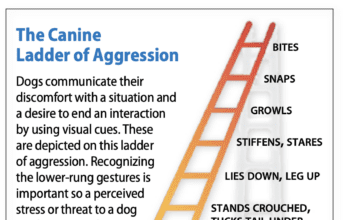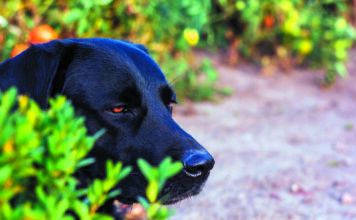Get Your Leash
Turn Off the Light
Shake Hands – Left and Right
Identifying Canine Stress
Our canine friends become stressed for the same reasons we do, says On Talking Terms with Dogs: Calming Signals. First and foremost, that means situations where they do not feel they can cope but also instances in which they feel the threat of pain or discomfort.
They show it by exhibiting calming signals — signals that, to another dog, are invitations to relax because no harm is meant. If you see these calming signals in your dog, try to figure out what you can do to limit his stress.
Two Wheels, Four Legs
Is Your Dog Training You?
Pit Bulls: Killer Dogs or a Much Maligned Breed?
Case of Canine Envy
Q: I have a whippet, Greta, and a Border collie, Lex. Both are rescues whom I adopted last year within a couple of months of each other. Greta about three and Lex is perhaps four years old. Whenever I rub Greta's belly or give her any special attention, Lex seems to appear out of nowhere and starts to paw at my arm or even lets out a slight growl at Greta. Is Lex acting jealous? How can I give Greta some one-on-one time without Lex butting in?
A: You won't find envy in the canine dictionary, but the phrase "mine, mine, mine" certainly exists. Lex's behavior is triggered more by resource guarding than by jealousy over the attention Greta receives. Watch closely the next time Greta and Lex play with a toy and you can identify clear canine communication. Chances are that one will body block the other or lift an upper lip or make steady eye contact - signals that possession is nine-tenths of the law in the land of dogs. As hunters and pack animals, dogs have always demonstrated a "this is mine" attitude toward other canines when it comes to prized possessions, from the best part of the kill to a fuzzy chew toy.
When you rub Greta's belly, Lex steps in because he wants to guard the most valuable of all possessions - you.
Off the Sofa!
Q: My three-year old beagle is a delight, but he has one vice: He insists on jumping up onto my furniture. His spiky hair gets embedded in the upholstery until it's nearly impossible to clean. I've tried putting old bed sheets on the furniture when I'm gone, but when I come home I find the sheets on the floor and Peppy happily snoozing on the sofa. I got him about a year ago from a rescue group and can only assume that he was allowed to get up on the sofa in his previous home. I'm planning to purchase nicer furniture and upgrade the interior of my house soon. Before I do, I want to find a way to end Peppy's possession of my sofa. How can I accomplish this?
A: Credit Peppy for having the good sense to bypass boring bare floors and seek a comfy sofa for his snooze sessions. However, it's your house and he needs to play by your rules. First, you need to provide him with a designated spot of his own. Before you begin picking out your new furniture, buy Peppy a comfy bed and put it in a spot where he will still feel...









